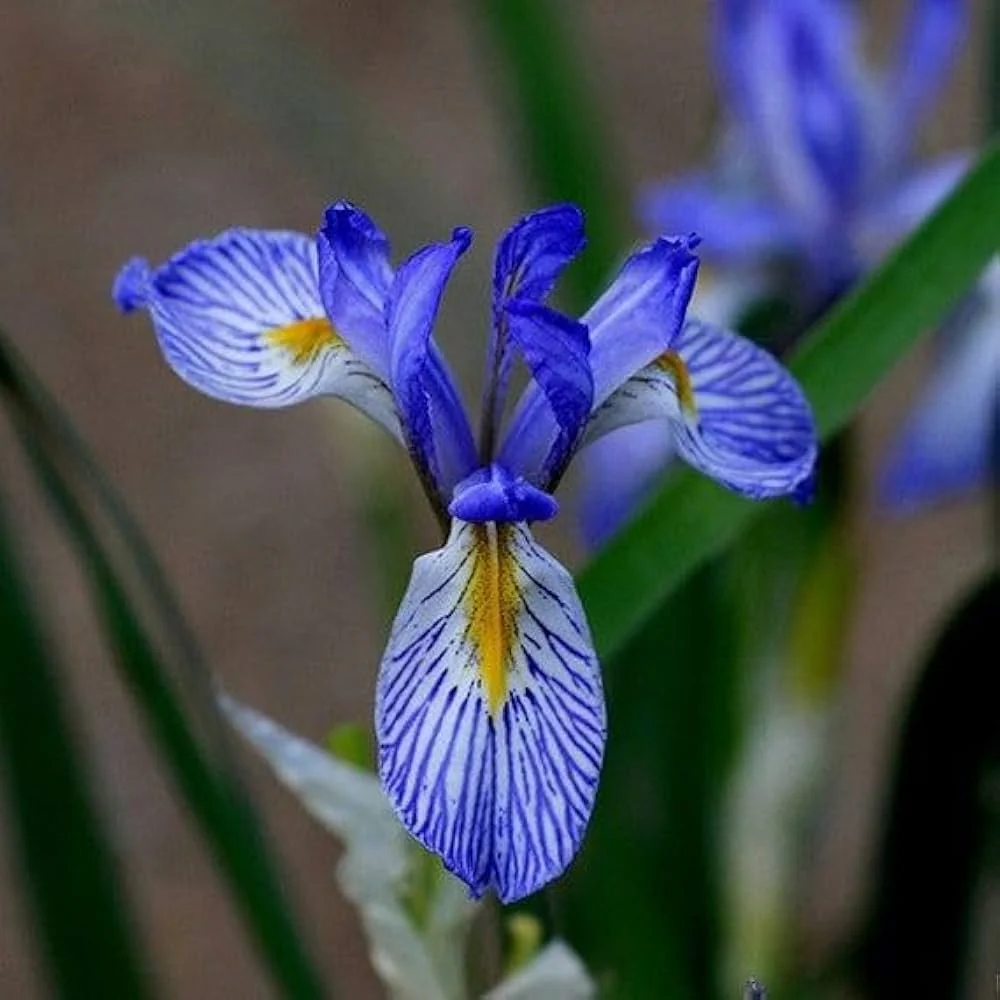
Dharaseeds
Wild Blue Iris Seeds
$49.99
Unit price perEstimated delivery between April 15 and April 18.
Wild Blue Iris (Iris versicolor), also known as the Northern Blue Flag, is a stunning native perennial that adds a splash of color to any garden. Known for its vibrant blue-purple flowers and elegant, sword-like leaves, this iris variety thrives in wetland or moist conditions and attracts pollinators like bees and butterflies. Growing Wild Blue Iris from seeds is a great way to add this beautiful, hardy plant to your garden while supporting local ecosystems.
Key Benefits
Stunning Flowers: Wild Blue Iris produces large, showy flowers in shades of blue and purple, making it a striking addition to any garden or landscape.
Pollinator-Friendly: Its beautiful flowers attract bees, butterflies, and other beneficial insects, supporting local wildlife and pollinators.
Low Maintenance: Once established, Wild Blue Iris is relatively easy to care for and thrives with minimal attention.
Moisture-Loving: Perfect for gardens with moist soil or areas that receive regular watering, such as near ponds or streams.
Hardy Perennial: As a perennial plant, Wild Blue Iris will return year after year, adding beauty to your garden with each passing season.
Variety Features
- Plant Characteristics: Wild Blue Iris has tall, narrow, sword-like leaves that form a clump. The vibrant flowers feature three petals and three sepals, with a beautiful contrast of yellow markings in the center.
- Bloom Period: The plant blooms in late spring to early summer, typically from May to June.
- Growth Habit: Grows in dense clumps with upright foliage, and the flowers are produced on tall stems.
- Size: Typically reaches 2–3 feet in height, with flowers that measure 3–5 inches across.
Planting Instructions
Planting Season
- When to Plant: Start seeds in early spring, or stratify them and plant in the fall for natural cold treatment.
- Ideal Temperature: Wild Blue Iris thrives in temperatures ranging from 60°F–80°F (16°C–27°C) during the growing season.
Planting Details
- Seed Depth: Lightly press seeds into the soil, covering them with a thin layer of soil or simply allowing them to stay on the surface, as they need light to germinate.
- Spacing: Space seeds about 1 inch apart. Once seedlings emerge, thin them to allow about 18–24 inches of space between plants.
- Soil Requirements: Prefers moist, well-draining soil that is rich in organic matter. The plant thrives in slightly acidic to neutral soil with a pH of 6.0–7.0.
- Sunlight: Wild Blue Iris prefers full sun to partial shade. However, it can tolerate some shade, especially in hotter climates.
Care Instructions
Watering
- Wild Blue Iris is moisture-loving and requires consistently moist soil. If planting near water, it can tolerate some standing water. In drier conditions, be sure to keep the soil consistently damp, especially during hot weather.
- Water deeply and evenly to keep the soil moist, but avoid waterlogging, which can lead to root rot.
Fertilization
- Fertilize in early spring with a balanced, slow-release fertilizer to promote healthy growth. You can also use compost or organic matter to enrich the soil.
- Avoid over-fertilizing, as excessive nutrients can lead to weak growth and fewer blooms.
Pruning
- After the blooming period, cut back the spent flower stems to promote healthy foliage growth.
- In the fall, trim back the leaves to about 3–4 inches above the ground to prepare the plant for winter dormancy.
Pest and Disease Control
- Pests: Wild Blue Iris is generally pest-resistant, but it can sometimes be susceptible to aphids or slugs. Use organic pest control methods to manage these pests if needed.
- Diseases: Iris plants can occasionally suffer from fungal diseases, such as iris leaf spot. To prevent this, ensure proper air circulation and avoid overhead watering.
Harvesting
- Flowering: Wild Blue Iris flowers can be cut for use in floral arrangements. The blooms last for several days when cut and placed in water.
- Seed Harvest: If you wish to collect seeds, wait until the seed pods have ripened and dried. Harvest seeds and store them in a cool, dry place.
Storage
- Fresh Storage: If planting seeds immediately, store any extra seeds in a cool, dry location.
- Seed Storage: To store seeds for future planting, keep them in an airtight container in a cool, dark place. They can be stored for several years if kept in proper conditions.
Culinary and Practical Uses
- Ornamental: Wild Blue Iris is often used in landscaping and garden designs due to its striking flowers and attractive foliage.
- Wildlife Habitat: The plant helps create a habitat for pollinators and other beneficial wildlife in the garden.
- Medicinal: While the roots of Wild Blue Iris have been used in traditional medicine, they should be used with caution and under the guidance of a professional, as they can be toxic in large quantities.
Conclusion
Wild Blue Iris Seeds are an excellent choice for gardeners looking to add vibrant color and ecological value to their gardens. With its stunning blue-purple flowers, moisture-loving nature, and ability to attract pollinators, the Wild Blue Iris is a perfect addition to any wetland, pond-side, or rain garden. This hardy perennial offers beauty, functionality, and a low-maintenance solution for enhancing your outdoor space year after year.









